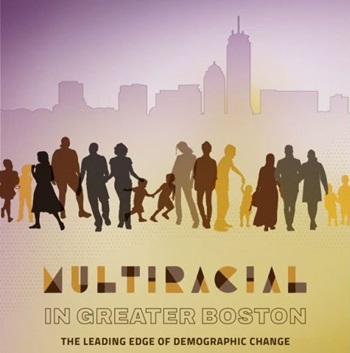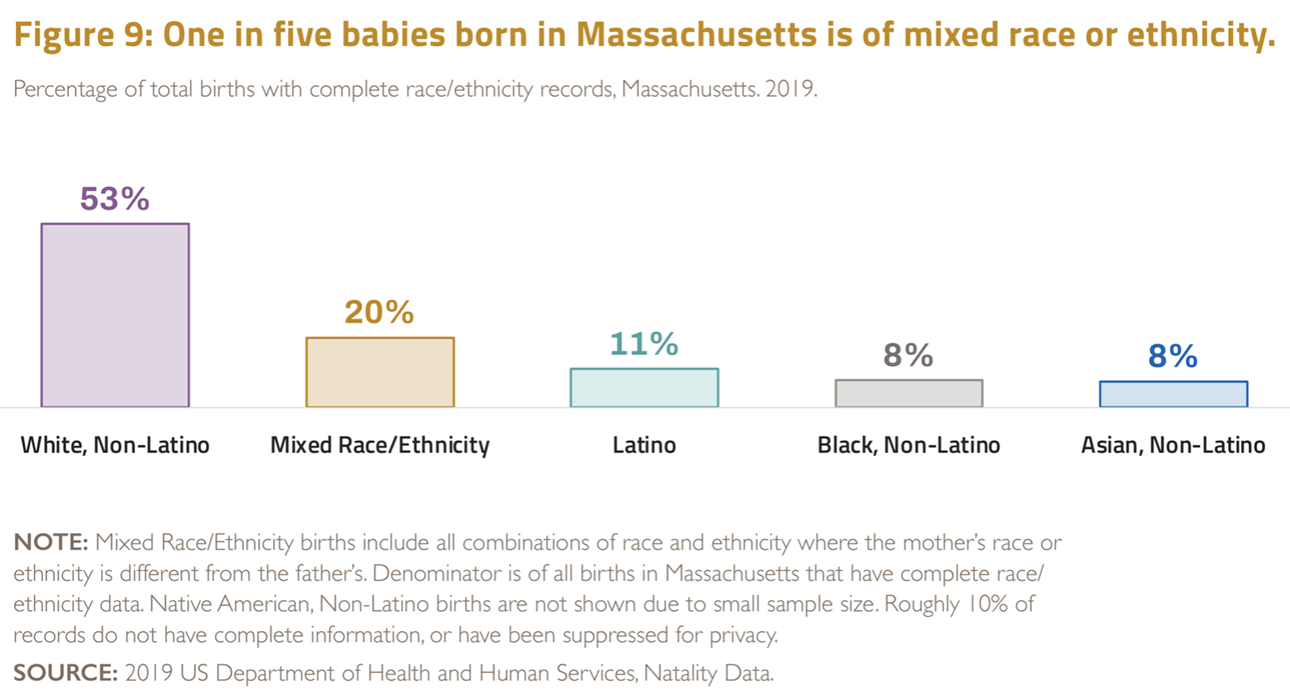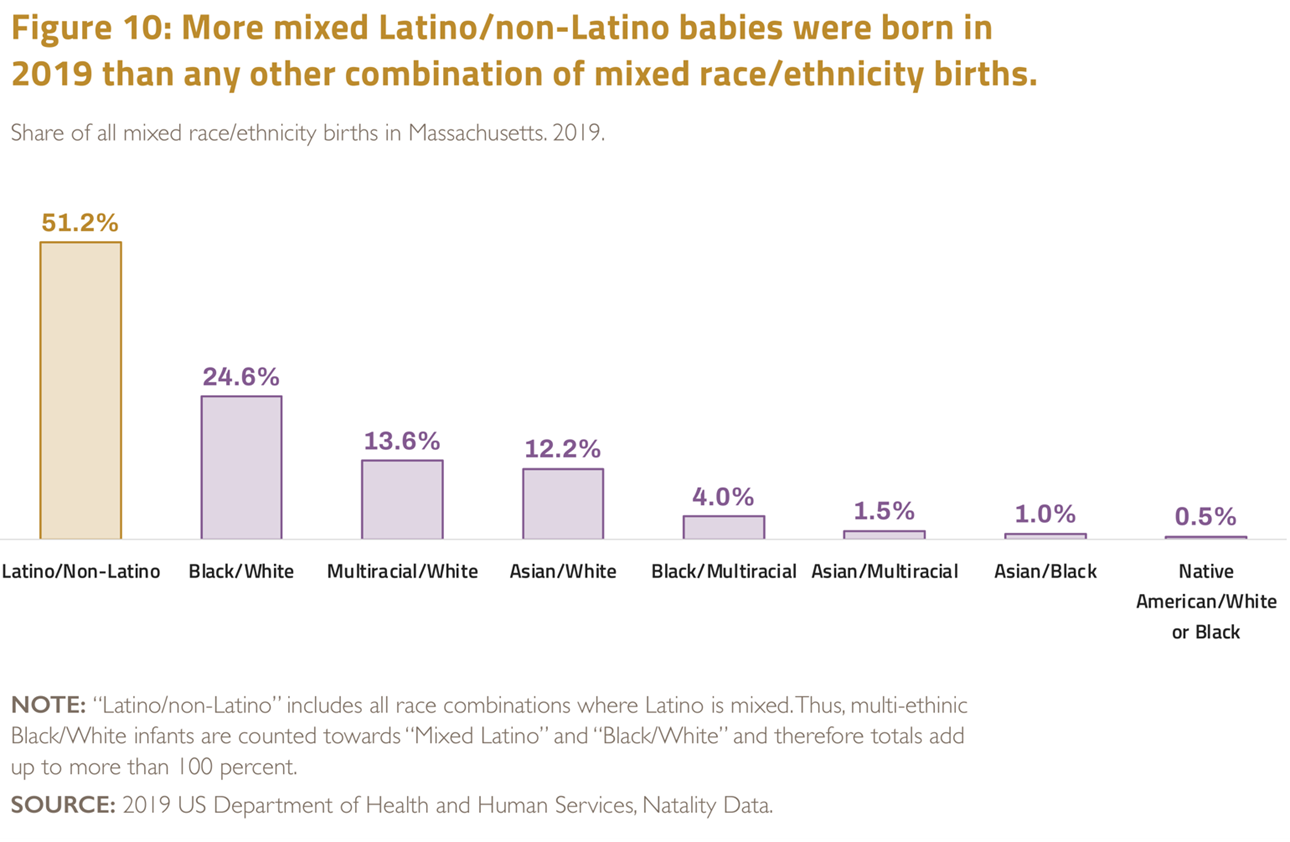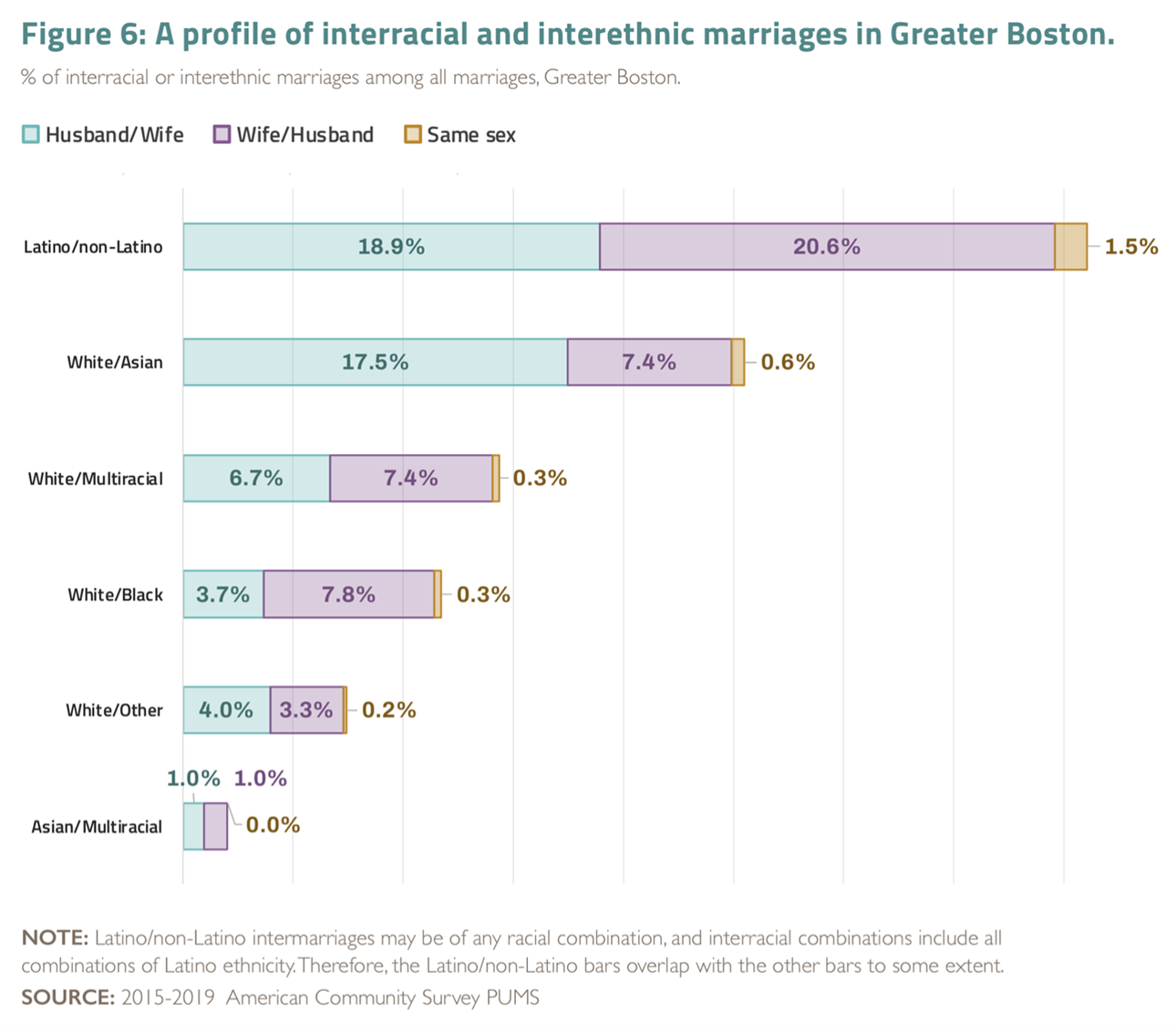New Boston Indicators report explores the drivers behind Greater Boston’s growing multiracial population
Research explores sharp increase in interracial marriage and mixed identity births as drivers of Boston’s changing demographics
November 16, 2021
Boston – A new report from Boston Indicators released today sheds new light on some of the driving forces behind the region’s growing multiracial population. The report, Multiracial in Greater Boston: the Leading Edge of Demographic Change, builds upon the recent U.S. Census data with analyses of birth and marriage records that provide insights into the multiracial and multiethnic identities that are reshaping the city and region in 2021.
“The recent Census demonstrated that ever-larger numbers of Americans are identifying as having mixed race or mixed ethnicity,” said Luc Schuster, Senior Director of Boston Indicators. “We wanted to get a better understanding of who makes up this quintessentially American group, and capture the remarkable nuances in our region’s growing number of multiracial families and individuals.”
The report looks closely at state birth records and census data on marriage to glean new insights into the multiracial and multiethnic population. Greater Boston’s multiracial population has doubled since 2000, according to the Census, a change driven in part by a rising number of mixed identity births. In 2019, for example, more multiracial or multiethnic babies were born statewide than Black and Latino babies combined. Nearly 1-in-5 babies born that year were of mixed race or ethnicity.
Over half of those babies had a mix of Latino/non-Latino parents, while another 25 percent had one Black parent and one White. Today 1-in-8 Greater Boston infants is living with parents of different races or ethnicities – a nearly fivefold increase since 1980.
The report also delves into the growing share of interracial and interethnic marriages, a trend that accelerated in the years after the 1967 case Loving vs. Virginia, which removed prohibitions on interracial marriage nationwide. Greater Boston’s share of intermarriages (a number that includes both mixed race and Latino/non-Latino marriages) lags the nation as a whole, but is still up exponentially in the past five decades.
Driven by these two trends, the number of multiracial people in both Boston and Greater Boston rose sharply – more than doubling in the region from 111,857 in 2010 to 249,453 in 2020.
“The trends we’re seeing are pronounced, but they make sense,” said Trevor Mattos, Research Manager at Boston Indicators and co-author of the report. “As intermarriage and interracial relationships become increasingly commonplace, the number of multiracial and multiethnic children rises. This creates a uniquely American demographic group that can effectively navigate in different communities and bring people together. But at the same time, an increasingly multiracial society can also create fear and be leveraged as a weapon for racism and nativism.”
It also makes understanding who we are as a region more complicated. For example, Greater Boston’s population that identifies as White alone grew by nearly 190,000 in the past decade, but the number of people who said they were White alone or in combination with another race or ethnicity jumped by nearly 308,000. The authors note that how we adapt to a growing multiracial population remains to be seen, particularly in institutions and systems that have been historically White-dominated.




